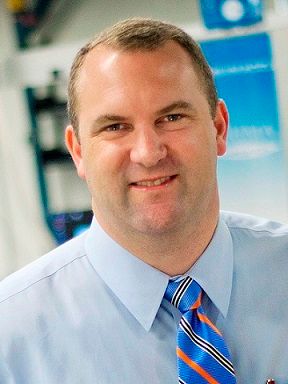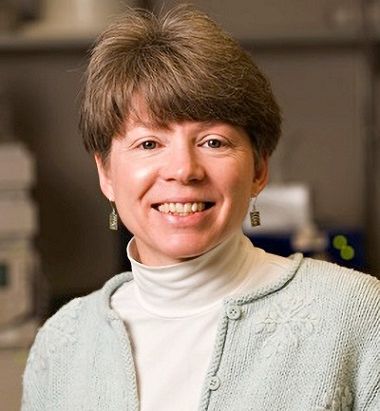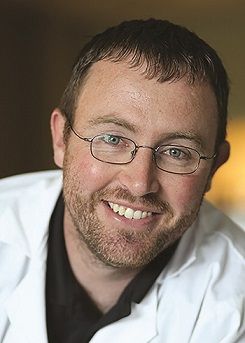Environmental Method Development: Key Challenges and Unmet Needs
LCGC North America
The environmental analysis community sorely needs a system by which new and up-to-date methods are more easily developed, shared, and adopted.
Whether working in commercial environmental laboratories or academia, many analytical chemists agree that the number and variety of pollutants requiring analysis today is straining the capabilities of current methods and technologies, the introduction of new standard methods is far too slow, and the community sorely needs a system by which new and up-to-date methods are more easily developed, shared, and adopted. These issues were all raised in some recent LCGC roundtable discussions.
In February 2019, the U.S. Environmental Protection Agency (EPA) unveiled (1) a comprehensive plan to deal with one of today's most persistent and pervasive classes of pollutants: per- and polyfluoroalkyl substances (PFAS). Used since the 1940s in a vast array of industrial and consumer products, including food packaging, firefighting foams, and fabric protectants, PFAS has been shown in laboratory studies to be associated with reproductive and developmental problems, liver and kidney function, immunological effects, and cancer. Among other actions, the EPA plans to develop new tools to characterize PFAS in the environment, and to set maximum levels for two common PFAS chemicals-perfluorooctane sulfonate (PFOS) and perfluorooctanoic acid (PFOA)-in drinking water.
The new EPA policies build on the agency's 2018 expansion of its Method 537 (2,3), which specifies the use of solid-phase extraction (SPE) and liquid chromatography–tandem mass spectrometry (LC–MS/MS) for the determination of PFAS in drinking water. The changes reflect a move to regulate a wider range of PFAS compounds, including so-called GenX chemicals and other newer products developed to replace specific PFAS compounds no longer on the market.
Although some environmental activists have welcomed the plan as a step in the right direction, the PFAS story is emblematic of a larger challenge facing today's environmental laboratories. Tens of thousands of chemicals of emerging ecological concern are released into the environment daily, posing a daunting array of scientific and regulatory issues for analytical chemists working in testing laboratories, academia, and the scientific instrument manufacturing industry. New findings about the health impacts of compounds such as glyphosate-based herbicides, microplastics, and dioxane are currently making headlines. The myriad of largely undisclosed chemicals used by the oil and gas industry in hydraulic fracturing ("fracking") are a source of ongoing public controversy. Meanwhile, a large class of persistent organic compounds, including dichloro-diphenyl-trichloroethane (DDT) and polychlorinated biphenyls (PCBs), continues to cycle through the environment, appearing decades after the compounds were last manufactured. Whether working in commercial environmental laboratories or academia, many analytical chemists agree that the number and variety of pollutants requiring analysis today is straining the capabilities of current methods and technologies, the introduction of new standard methods is happening far too slowly, and the community sorely needs a system by which new and up-to-date methods are more easily developed, shared, and adopted. These issues were all raised in some recent LCGC roundtable discussions. This reporting on trends in environmental analysis was underwritten by GE Healthcare.
Regulatory Ambiguity
Testing laboratories are often unsure of which regulatory statutes apply to certain sample types, says William A. Lipps, the chief science officer at Eurofins Eaton Analytical (Monrovia, California). For example, although the existing EPA guidelines for PFAS analysis in drinking water take the guesswork out of that particular application, the guidelines do not address one of the largest sources of PFAS contamination: wastewater. "As far as I know, there's really no activity to make a method for wastewater," said Lipps.
Lipps says that with more than 6000 known PFAS compounds in the environment, more up-to-date methods could help laboratories face an array of tough questions: "Who knows which ones to look for? How do you run them? Do you use this column or that column? This mobile phase or that mobile phase? Is it an ion? Is it an organic? At commercial laboratories, we don't really have time to deal with that stuff anymore."
PFAS compounds as a class comprise molecules across a wide size range, and the challenge of selecting the appropriate chromatographic technique is yet another consequence of the lack of PFAS standards, says Kevin Schug, the Shimadzu Distinguished Professor of Analytical Chemistry at the University of Texas at Arlington. "If you look at the thousands of variants of these PFAS compounds, you're talking about small molecules that are easily LC-able, and then [on the other end], you have really big polymeric species," he said. "There are very different analytical challenges with characterizing those and-again-there are no standards."
Similar ambiguity surrounds the selection of analytical methods for recycled water: processed wastewater that is increasingly being used in agriculture, landscaping, and other applications that increase the risks of human exposures to hazardous pollutants. In principle, Lipps notes, recycled water could fall under either wastewater or drinking water regulations, but there are consequences of the choice, and important implications for which methods would be used and how the laboratory would apply quality control. "Wastewater methods allow you to make some modifications, but drinking water methods don't," he explained. "If there's significant turbidity, the drinking water method won't work. You're probably going to need a combination of both, but there's really no EPA statute that handles recycled water as it is."
Laboratories working to measure the environmental impact of fracking chemicals face special challenges, due to the large array of chemicals currently in use by the oil and gas industry, most of which are not publicly reported because they're part of proprietary processes. "Even the oil and gas operators don't know exactly what they're using, in some cases," Schug adds.
One of the many issues is that there are a lot of different chemicals being used, in extremely high volumes, to stimulate the ground when companies are trying to extract oil and gas. "There's the potential for waste to be mishandled and to touch the environment, to get into drinking water and groundwater," said Schug. "There's not the kind of EPA standard methods to look at water quality through the lens of all those different chemicals."
Lipps agrees. "Nobody knows what they're sticking down that hole, and they're not going tell anybody, because it's proprietary," he said. "And so [fracking involves] all these different compounds. We have no methods for them. We don't know what they are."
Industry's response to the regulation of certain toxic compounds is often to develop chemically similar variants that offer similar performance, but sidestep existing regulatory statutes. The manufacturer creates a new compound that does the same job as the original substance, but has an unknown toxicity profile. "It's almost like a designer street drug type of situation," Schug remarked.
These issues underscore the concern raised by many environmental chemists that the EPA's development of new methods has simply not kept pace with the dramatic changes in the volume and variety of pollutants needing analysis. They say that the agency's methods are largely focused on compounds that are no longer manufactured, and, that when the EPA does develop a new method, it often is based on the capabilities of outdated analytical equipment.
"The EPA methods were written for priority pollutants, like organochlorine pesticides, or organochlorine solvents," Lipps said. "We're sitting around monitoring things that were banned 40 years ago, and yet there are absolutely no methods for the new things that are coming out. EPA just doesn't move fast enough." And by the time the agency does release a new method, he added, it may have been developed on a piece of equipment that may be more than a decade old.

“We’re sitting around monitoring things that were banned 40 years ago, and yet there are absolutely no methods for the new things that are coming out.”-William A. Lipps, Chief Science Officer, Eurofins Eaton Analytical
Jennifer Field, a professor in the Department of Environmental and Molecular Toxicology at Oregon State University (Corvallis, Oregon), said that, although she isn't required to follow EPA methodology in her research, she also believes that existing EPA methods often call for the use of older techniques that add complexity to the analytical process without substantially improving performance. "PFAS is where my laboratory spends 99% of its time now, so we're watching the development of EPA methods," she says. "EPA methods tend to be lagged in time, technology-wise."
Field points to the mandated use of SPE in many EPA methods as a prime example of the agency's adherence to older technologies that may not be necessary or even appropriate. "I personally want to see the use of SPE decline," she stated. "It's really not necessary for so many applications. I think SPE has a history and [exists for] a reason, but there are a lot of problems that come with it, in terms of cost, time, and waste."
Field considers SPE a "crude tool," that requires inordinate amounts of time, labor, and sample matrix to obtain just the few microliters needed for analysis. "People have been told from infancy that SPE protects columns and mass spectrometers. I haven't had an application yet where that's true," she said, citing her laboratory's alternative practice of using the mass spectrometer's divert valve to eliminate salts and other components that are eluted prior to the analytes of interest. "I get the same functionality with much better control and resolution [than with SPE]. If you know your LC instrument very well, you can essentially achieve everything for water samples you can achieve with SPE. It's greener, faster, there's less labor, there are fewer problems with lot changes, and you just have much finer control. But this is a hard sell."
Lipps shares Field's concerns about SPE, but says he has no choice other than to use it. "As a commercial lab, we're stuck with it, especially for drinking water. There's really no reason for it, but we have to do it. So, we take an analysis that is maybe 15–30 minutes per sample on the instrument, and we add four hours to a day of sample preparation to it."
Filling the Method Development Void
Academic environmental laboratories and volunteer organizations, such as American Society for Testing and Materials (ASTM) International, are positioned to fill the void in analytical method development. However, many chemists say that it's difficult to secure the time, resources, and human capital for a task that is typically under-valued inside an organization, and under-utilized by the chemistry community at large.
"Developing methods for wider use is kind of the goal," said Sascha Usenko, an associate professor in the Department of Environmental Science at Baylor University (Waco, Texas). "But with the variations in approaches and technologies-which are somewhat competitive-it's kind of hard to get even a good method broadly accepted."

“Even the oil and gas operators don’t know exactly what they’re using, in some cases.” -Kevin Schug, Professor of Analytical Chemistry, University of Texas at Arlington
Field agrees that academic laboratories face barriers in transferring methods to the broader community and commercial environment. "For example, our main vector is to put papers in peer-reviewed journals," she said. "But not everybody outside academia has subscriptions to those, nor wants them." The open-source vehicles for disseminating methods might facilitate more efficient technology transfer, she added.
As a contract laboratory scientist who also serves as a volunteer chairman of ASTM International's Committee D19 on Water, Lipps views the issue of standard method development from a unique vantage point. "ASTM is all-volunteer, so the speed at which we can bring a method forward is based on the speed of the volunteers and the voting process," he explained. "We've had some methods go through in as fast as a year, and others take five years." Finding qualified volunteers willing to sign on for the tedious, time-consuming work of ASTM method development is no small task, he added. "For the most part, it's roughly 20 or 30 people in the United States doing all the methods being developed at ASTM," he said. "There is just not that much interest. It's hard, it's a challenge, it takes a lot of time. And it's a very expensive endeavor."
Lipps said that the environmental analysis community is reluctant to adopt non-EPA methods, even though the agency recognizes many standards developed by others. He cited past efforts to develop three EPA-approved ASTM methods for cyanide that significantly reduced sample preparation time. "Roughly eight years after the fact, I only know of two laboratories that are running one of them," he said. "You would think that commercial laboratories would jump at this, but the adoption is almost nothing."
ASTM has developed "probably about 10 LC–MS/MS methods that don't use SPE...[for] polar pesticides, herbicides, other organic compounds like glycols-those are the types of methods we're developing at ASTM that do a modified form of direct injection LC–MS/MS," Lipps added. "They are published. They are standardized. And the world just absolutely rejects them."
A fundamental challenge for academics who seek to spend time or money on method development is the widespread lack of appreciation for the complexity of the method development process itself. "In the environmental world, a lot of my colleagues and collaborators are engineers," Field remarked. "They just want you to measure stuff. They think these methods grow on trees. They don't realize that method development is a whole discipline that requires a very systematic validation for each matrix of interest. The time and effort are simply undervalued by everybody except an analytical chemist." As a result, she continued, academic chemists are rarely able to secure funding specifically for the time and materials required to develop new methods, and often end up doing the work while in the process of performing other funded studies.
Technological Challenges
Many environmental chemists also say they feel current analytical technologies do not adequately meet their current needs, although they cite a wide variety of reasons for that view. Many environmental chemists share the perception that innovation in environmental analytical instrumentation and methods has lagged behind the more lucrative pharmaceutical and life science markets. Other scientists, typically those working in unregulated academic laboratories, seek instrumentation for highly specific, complex measurements that aren't possible with standard commercial systems. Furthermore, for many laboratories across the spectrum of environmental analysis, advanced instrumentation and the skilled personnel required to operate it to its full potential are economically out of reach.
Lipps, who formerly worked in marketing and product management for several instrument manufacturers, described something of an innovation stalemate in the environmental sector. Instrument manufacturers are hesitant to spend money to develop a new technology for environmental applications because the EPA continues to base its methods on older technologies, and laboratories are reluctant to buy new instrumentation unless it is specifically blessed by EPA-approved methods.
Usenko said that if laboratories can't afford to acquire the technologies they need, they have to "ask different questions, based on the technology they have in hand." He said that he personally devotes significant time and money to modifying instruments to achieve desired measurements. "For my proton-transfer reaction (PTR) MS system, I actually built a cold trap system so I could reduce the amount of moisture" when measuring compounds like formaldehyde in atmospheric samples. "All of a sudden, I've got to put a $50,000 modification onto that instrument-and that's just me building stuff."
Laboratories that do manage to acquire advanced instrumentation, such as high-resolution mass spectrometers for chromatographic analysis, can feel hindered by the incompatibility of the various manufacturers' proprietary data platforms. Field said in the case of her laboratory's recent purchase of a quadrupole time-of-flight (Q-TOF)-MS system intended to be used in collaboration with another laboratory, the decision was based more on the need to share data than on the capabilities of the data collection hardware. "There are people trying to fix that with independent programs and ways to translate files so they are comparable, but it's not routine and not commercially available yet, to my knowledge," she remarked.

“In the environmental world, a lot of my colleagues and collaborators are engineers. They think these methods grow on trees. They don’t realize that method development is a whole discipline that requires a very systematic validation for each matrix of interest.” - Jennifer Field, Professor of Environmental and Molecular Toxicology, Oregon State University
Role of Untargeted Analysis
Advances in full-scan mass spectrometry in recent years have enabled analytical chemists to determine large numbers of substances in a variety of sample types without knowing in advance what they were looking for. Untargeted analysis also enables users to search stored data from previous samples for the presence of compounds of emerging interest. The environmental analysis community seems to be gradually moving in the direction of untargeted analysis, although the change isn't happening overnight.
"There's absolutely a wave in that direction," Field stated. "The amazing power-and the challenge, resource-wise-is in the reduction and analysis of the data. The files are huge. They collect everything all the time." Advanced tools like Q-TOF, she said, can determine targeted analytes, suspected compounds of interest, and complete unknowns. "The instrument has all these capabilities," she said, "but the magic and the mystery and the challenge is dealing with the data. There's tremendous strength and power, but it's going to require a very talented workforce. It's going to take very expensive instrumentation. It takes faster computers just to deal with it. And, of course, data storage is a monster. The regulatory world isn't even close to dealing with things for which there are no standards-which is where this instrument shines."
Lipps agrees. "In my opinion, there's a very big demand to do untargeted testing, but it takes somebody that really, really knows what they're doing to ensure the resulting data is actually useful," he said.
Sample Preparation Issues
Problems with sample collection, preparation, and introduction are perpetual challenges in environmental analysis, and account for the vast majority of errors. Sample preparation is a complicated, and often tedious, step in the experimental process that many experienced chemists take pains to avoid, and, like method development, the time and expertise required for efficient sample prep is rarely appreciated by colleagues from other disciplines.
Despite these challenges, not everyone dislikes this part of the analytical process. "I enjoy sample prep" admitted Usenko. "There's a lot of opportunity within sample preparation to improve your overall analytical throughput, where you have less instrument downtime because the bulk of the heavy lifting is done with sample prep."
Field has taken the opposite approach in her lab. "I have dumped as much sample prep as I humanly can," she said. "Our lab hasn't run SPE for anything through an LC–MS in probably 12 years."
Nevertheless, laboratories using EPA methods are routinely required to perform SPE before analysis, adding to the sample handling complexity of analyzing samples like those containing PFAS-containing substances. PFAS samples typically contain high concentrations of suspended particulate matter and organics that can clog SPE columns and cause matrix effects. Removal of suspended solids before extraction using conventional filtration can absorb analytes of interest, contaminate the sample, and results in the determination of only the dissolved fraction of the sample.
EPA methods mandate other sample-handling procedures that cause headaches for contract laboratories. For example, according to EPA methods, PFAS samples cannot be held for more than two weeks before analysis. "The PFAS has been out in the environment for 20 years and hasn't changed," Field said. "But contract laboratories are stuck with a lot of things that are mandated for which there just simply isn't any scientific basis. As an academic, I would love to create methods for that community, yet these laboratories are constrained."
Potential Solutions
Acknowledging his bias as an editor of ASTM standards, Lipps believes closer collaboration between the EPA and ASTM would help method development proceed more quickly. He gets the impression that the EPA is reluctant to share information with volunteer consensus bodies, because of legal or other concerns. He says EPA worked much more closely with organizations like ASTM in the 1980s and 1990s, but those close collaborations aren't as common anymore.
"It would really help if [academics] were able to get their methods out there a little bit quicker and EPA could just adopt them or post them in the Federal Register and say, 'These things are allowed,'" As it is, he stated, contract laboratories are unable to use methods unless they first appear in the Federal Register. "People at universities develop methods, and we just can't use them. Even though we know we're going to get the right number with it [a new method], it doesn't matter. We know that we might be reporting the wrong number [by using an outdated but approved method], but that doesn't matter. The wrong number is EPA-approved, so that's what we report."

“With the variations in approaches and technologies-which are somewhat competitive-it’s kind of hard to get even a good method broadly accepted.” - Sascha Usenko, associate professor of Environmental Science, Baylor University
From the academic perspective, Usenko believes policy-makers, regulators, and research funders must return to the idea that investing in new technologies and method development work is worth taxpayer dollars. "There are always going to be new threats or new issues, but if we want to do the best for environmental and human health, it's a worthwhile investment."
Another step forward-although "a bit of a pipe dream"-said Field, would be for the United States to follow the European Union's lead in requiring manufacturers to disclose more data (and analytical methods) about their new compounds before they are permitted to market them. "One of my beefs," she said, "is that I get federal dollars to reverse-engineer proprietary formulations that were released on a large scale to the environment. Taxpayers are getting hit over and over again in this country to pay for solving problems they didn't create. This is how you basically let industry slide on their responsibilities toward environmental stewardship and public health."
Future Outlook
Environmental chemists may face some significant challenges, but the next generation of environmental chemists is a source of optimism that things will get better. "There's a lot of talent out there," Field said. "There are a lot of young people who want to make a difference. It's a wonderful field to be in, and I've really enjoyed watching it unlock the ingenuity and creativity in students. Method development is challenging, it's fun, and it's our way of saving the world."
Disclaimer
The views expressed here are the views of the individuals quoted, and do not necessarily reflect the views of Eurofins or any other organization.
References
(1) EPA's Per- and Polyfluoroalkyl Substances (PFAS) Action Plan, EPA 823R18004, February 2019, www.epa.gov/pfas.
(2) J. Shoemaker, P. Grimmet, and B. Boutin, Method 537, Determination of Selected Perfluorinated Alkyl Acids in Drinking Water by Solid Phase Extraction and Liquid Chromatography/Tandem Mass Spectrometry (LC/MS/MS), U.S. Environmental Protection Agency, Washington, DC, 2008.
(3) J. Shoemaker and Dan Tettenhorst, Method 537.1, Determination of Selected Per- and Polyfluorinated Alkyl Substances in Drinking Water by Solid Phase Extraction and Liquid Chromatography/Tandem Mass Spectrometry (LC/MS/MS). U.S. Environmental Protection Agency, Washington, DC, 2018.
Underwriting
This reporting on trends in environmental analysis was underwritten by GE Healthcare.
ABOUT THE AUTHOR
Michael MacRae writes about science, technology, and society. A former editor of LCGC North America and its sister publication, Spectroscopy, he lives in Portland, Oregon. Direct correspondence to: msmacrae@yahoo.com.

New Method Explored for the Detection of CECs in Crops Irrigated with Contaminated Water
April 30th 2025This new study presents a validated QuEChERS–LC-MS/MS method for detecting eight persistent, mobile, and toxic substances in escarole, tomatoes, and tomato leaves irrigated with contaminated water.
University of Tasmania Researchers Explore Haloacetic Acid Determiniation in Water with capLC–MS
April 29th 2025Haloacetic acid detection has become important when analyzing drinking and swimming pool water. University of Tasmania researchers have begun applying capillary liquid chromatography as a means of detecting these substances.

.png&w=3840&q=75)

.png&w=3840&q=75)



.png&w=3840&q=75)



.png&w=3840&q=75)










